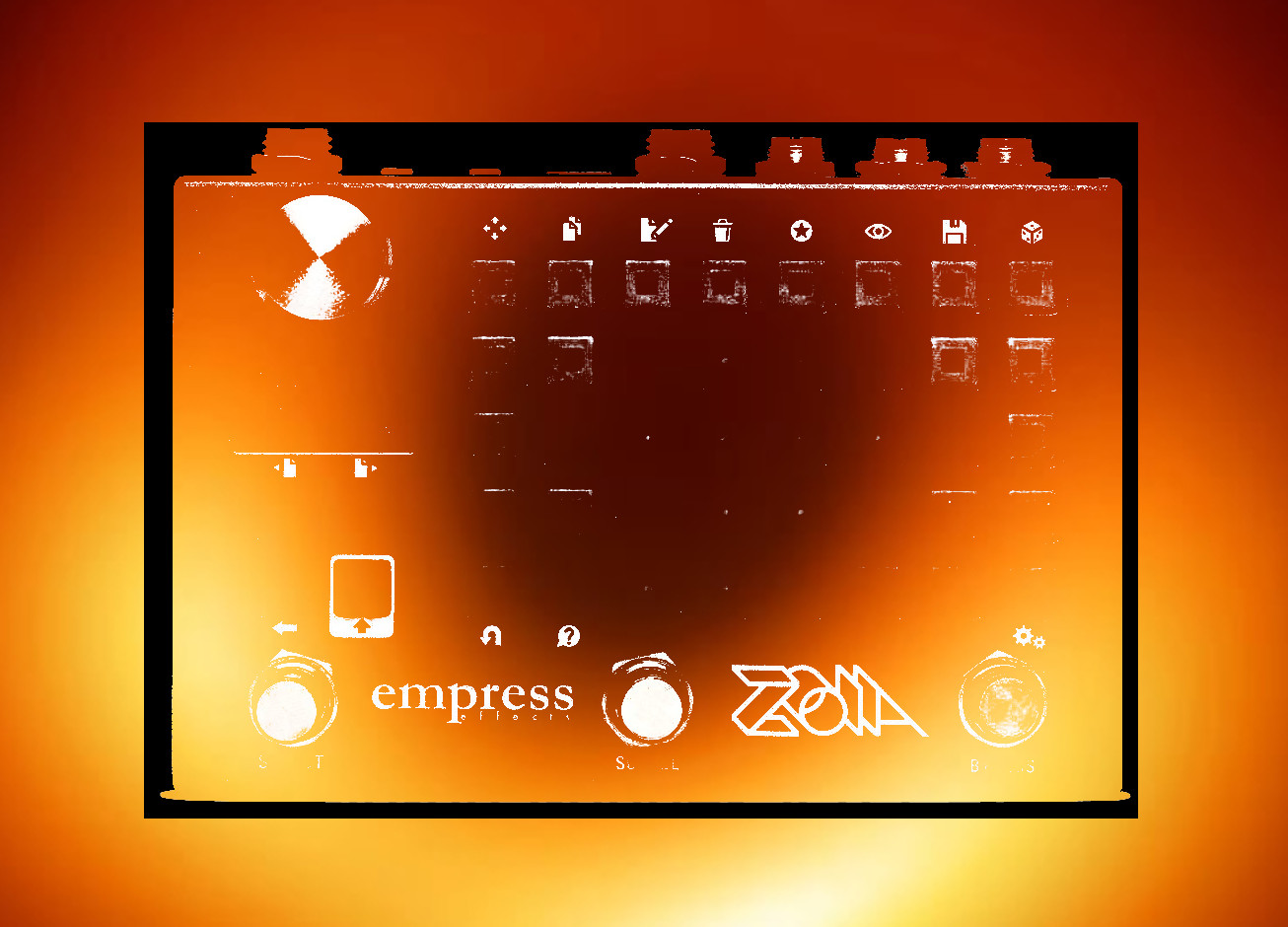Nephos — Greek for ‘clouds’ (and I read in one source, regarding Biblical translation, clouds which covered the heavens as opposed to individual or distinct clouds) — is derived from a patch I made for the Zebu factory pack called ‘Microsounds.’ Like that patch, the basic sound involves running two granular modules both in parallel and in series; audio passes in and out of each, but it also recycles through both. The pitch of the two granular modules is offset, so as one module’s pitch goes higher, the other goes lower (e.g. if one is an octave above, the other is an octave below) — when audio passes from one to the next, it is pitch-shifted back to the original audio’s pitch, but changed by the granular processing.
But these clouds can be ominous: after the granular processing, the outputs of the two granular modules are multiplied against one another (ring modulated) to produce all sorts of dissonant, resonant tones. The ‘clean’ granular sound and the ring modulated granular sound are mixed, before arriving in a low-/high-pass filter (with resonance) which can accentuate and suppress elements of the sound. Then, they pass to a reverb lite to add… well, reverb, space, ambience, etc.
The sum total is a sound that can be both delicate and dark in turns, adding complexity and dimension to its input.
The patch is stereo throughout.
Controls:
Left stompswitch — activates randomly freezing the buffers (the freeze may affect one buffer, or the other, or both, or neither); this is also reproduced with a UI button on the front page, which will light up when the random freeze is activated (pixels along the top will also show much buffers are frozen)
Front page:
The front page is broken up into sections, moving left to right, with descending controls all sharing the same color to signify which section they govern.
The first section is the freeze section. The UI button here can be pressed to introduce random freezes. The freeze rate will determine how quickly the freeze changes state; long freezes can add glitchy repeats of notes or phrases; short freezes add a sort of staccato structure to the sound.
The next section is the granular engine controls. At the top of a level for the clean granular engine. Below this is a pitch control, which allows you to set the pitch of the first engine in the series; the second engine will be inverted from this (so as one pitch rises, the other falls and vice versa). There is a subtle difference in which engine is high and which is low, due to the series configuration. Grain size sets the grain size, but it also affects the delay between input and output, with larger grains taking longer to process (but being perhaps ‘smoother’).
The mod section controls the position modulation of the granular engines. It can be set to either random-triangle or simply random, using the pushbutton at the top. The rate and depth control how quickly the modulation moves through the engines’ position controls.
The ring mod section only has one control: level. Using this and the granular engine’s level control, you can mix the ‘clean’ and ring modulated signals.
Next is the filter. The filter moves continuously from low-pass (negative values) to high-pass (positive values). It can be used to clean up low-end (high-pass) or dampen some of the pitch-shifting sparkle (low-pass), or, by adding resonance, adding more to the texture of the sound.
Then, there is a reverb control. This is a simple reverb decay and reverb mix for the reverb lite.
Finally, there is a dry signal level.


